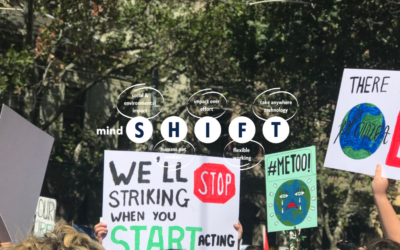As we rapidly approach the last possible date for announcing the federal election, our third and final post on climate change policy takes a look at Labor’s positioning on the issue.
It’s complicated: The Australian Labor Party and climate change
This year, the centrepiece of Labor’s climate policy is to cut emissions by 43% by 2030. While this is indeed higher than the Coalition’s unchanged 26 – 28% target, it remains lower than the 50 – 74% reduction climate scientists say is necessary for Australia to stay within the respective 2°C and 1.5°C limits of the Paris Accord. Viewed through a mindSHIFT lens, this target doesn’t reach far enough. It doesn’t consider the impact a lower target will have on people or the planet at this critical juncture.
While some commentators have expressed their disappointment, it’s worth recognising the social context this policy stemmed from. At the 2019 election, Labor pitched a higher 45% reduction on 2005 levels to electorates. This was largely praised by scientists and analysts but saw Labor heavily criticised by the Coalition and in the mainstream media. The electorates then punished Labor for proposing what they appeared to deem an expensive policy. This result also sheds light on Australian Labor’s current identity crisis as a party split between; trying to appease its traditional union base in heavy industry, and those in more progressive, inner city electorates.
From a political risk perspective, is this hedged position understandable? Absolutely. Does it mean Australia will not achieve the considerable emissions reductions necessary to thrive in a carbon constrained world? Yes to that, too.
Climate change policy in 2022: the best of both worlds?
Despite all of this, a 43% reduction would bring the federal government much more in line with the existing emissions reduction targets of all other states and territories bar Queensland.
Given the decades-long lag on solid climate policy at a federal level, this would be a notable achievement for the nation, and would provide much-needed policy certainty for local industry.
Other notable changes to Labor’s policy since the 2019 election also include:
- aiming to generate 82% of the national electricity grid’s power by renewables by 2030
- investing in upgrade transmission infrastructure, to speed up the shift to renewables, along with investment in solar banks
- the removal of a 2019 pledge to introduce fuel efficiency standards as a mechanism for reducing transport emissions and
- capping the emitting of heavy industry through an existing Coalition safeguard mechanism to deliver an additional reduction of 213 megaton (mt) of greenhouse gas emissions by 2030.
Finally, and in a considerable shift from usual alliances, Labor’s 2022 policy has garnered the support of the Business Council of Australia (BCA). As the country’s largest industry group, the BCA have previously tended to align themselves with the more economically conservative policies of the Coalition, so this shift signals a considerable desire for a stronger climate policy from the business community.
The choice belongs to the Australian people
As we noted last week, it will be the people of Australia who will determine whether this policy presents a more palatable alternative to that of the Coalition. And if the electorate reject both Coalition and Labor climate policies, they will have a raft of climate-focused alternative candidates to choose from.
From The Greens to the numerous Climate200 backed independents, in this election we’re seeing a strong push from the minor parties for science-backed emission reduction targets of 75% by 2030, along with a full phase out of coal and gas by this time. While both Labor and the Coalition assert this is unrealistic, this is the position that experts say is needed to stay within 1.5°C and avert the worst impacts of climate change.
Only time will tell which approach will appeal most to the Australian people.
One thing we know for sure is that there will be changes to the way we do business. For help navigating that change, you can always get in touch.




